WHAT’S DOING IN YOUR ‘HOOD
Rhododendron Death?
I don’t know if this is happening in your neighborhood, but in my neighborhood a fungus is reported to be ravaging rhododendrons. Except that it’s not a fungus. Those browning, wilting leaves are caused by cold.
This past winter, temperatures did drop a few degrees below zero Fahrenheit, but that’s pretty much par for the course these days. In years past, winter temperatures here on the farmden regularly dipped down to near minus 20 degrees Fahrenheit, which was why I was always reluctant to plant rhododendrons.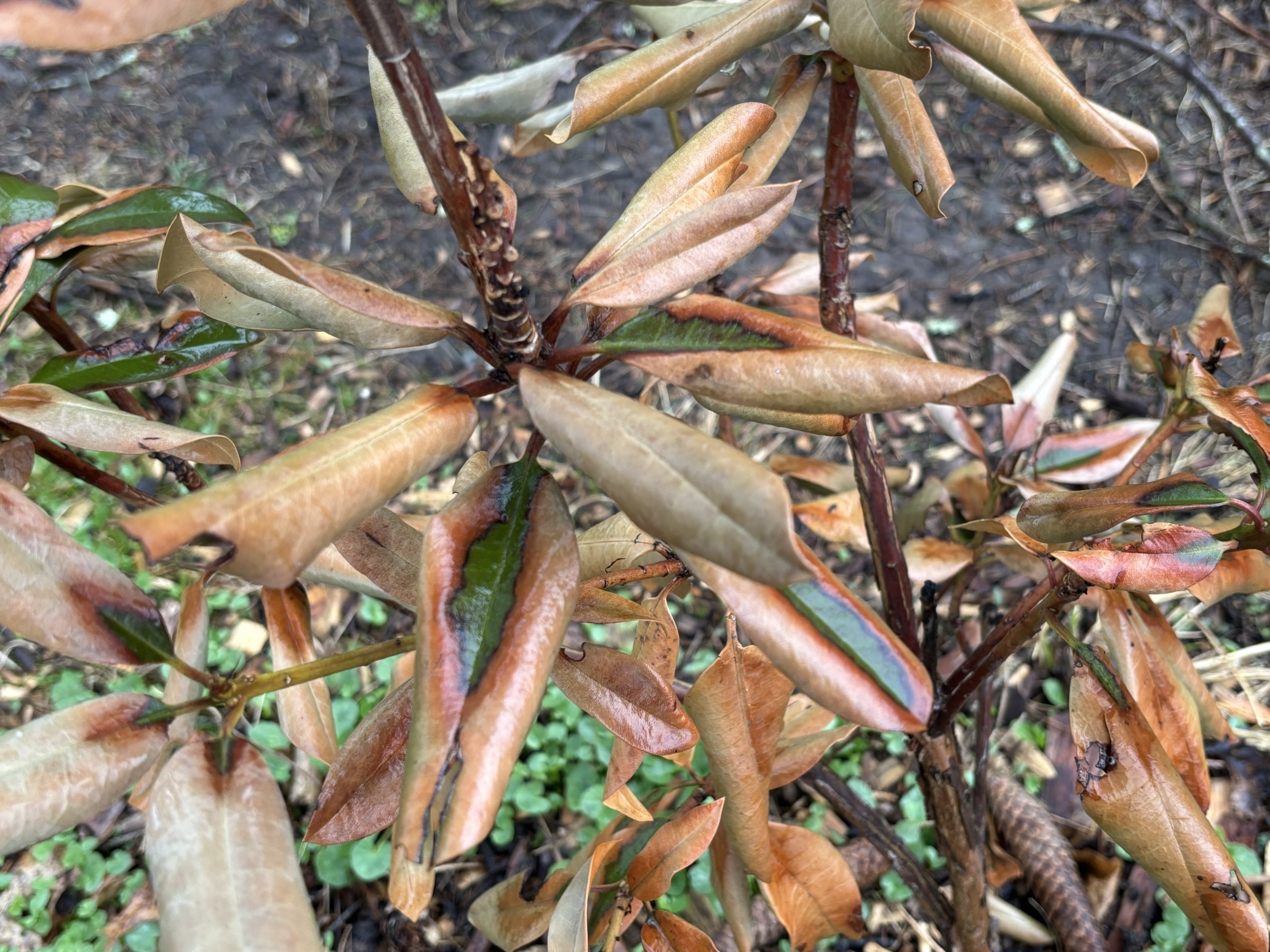
Except for varieties of PJM rhododendron, which are known for laughing off lots of cold. Those plants, by the way, show no sign of winter damage, and never have after many decades here.

PJM in years past
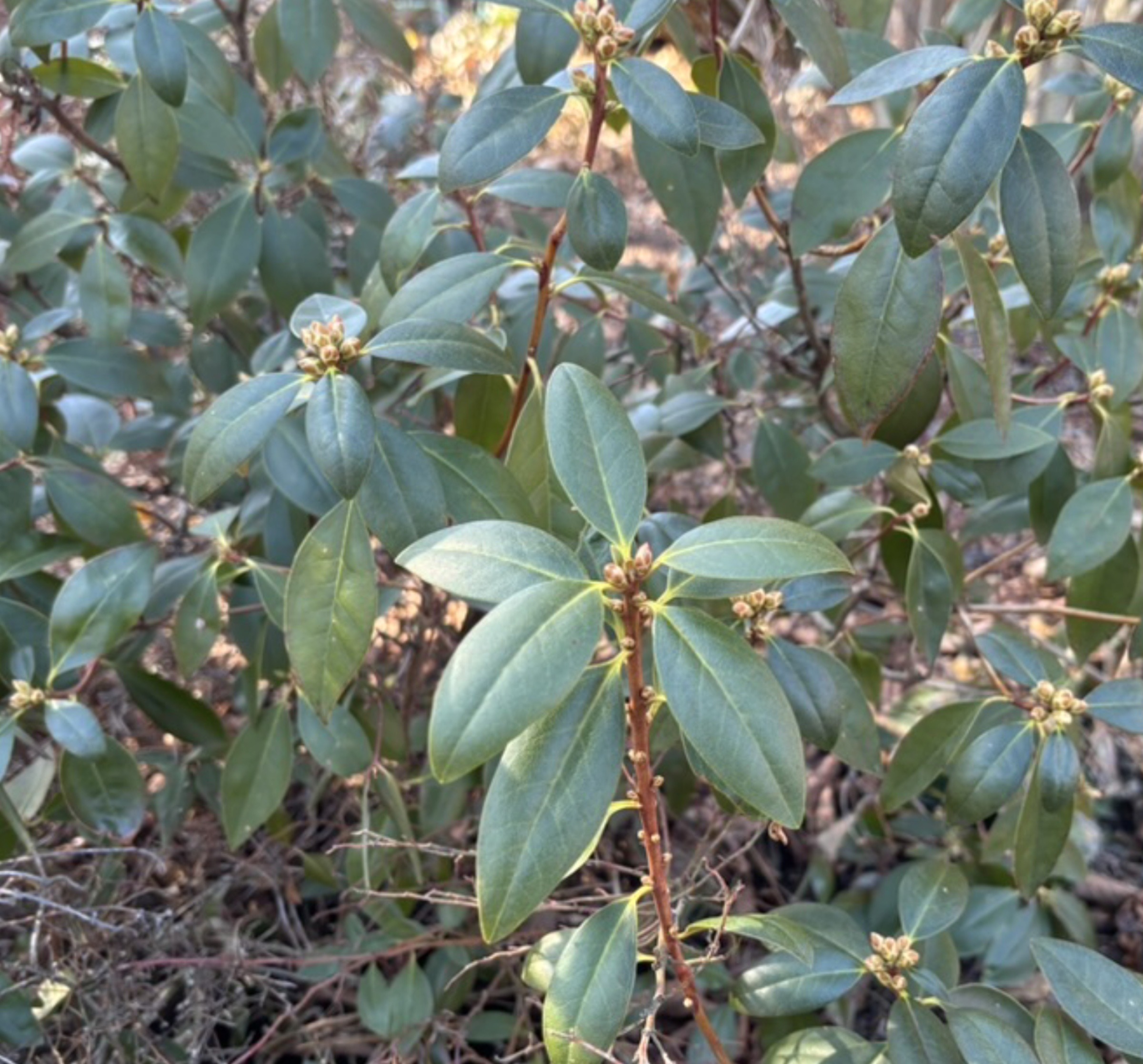
PJM this spring, flowers will follow
So rhododendron species and perhaps variety factor in to whether or not damage occurs. This may explain why, walking to near the east side of my home, a couple of rhododendrens on a raised bed there look fine. Unfortunately, I don’t remember the species or variety of those plants. (Any help out there? The plants are compact with white flowers and hoary leaves.) Also no damage also to the large plant that yields magenta flowers near the north wall of that raised bed.
The “dying” or “dead” plants have all the symptoms of cold damage: Leaves browning along the tips or edges of leaves, rolling along their midvein, and drying out. And yes, some stems could have experienced some dieback.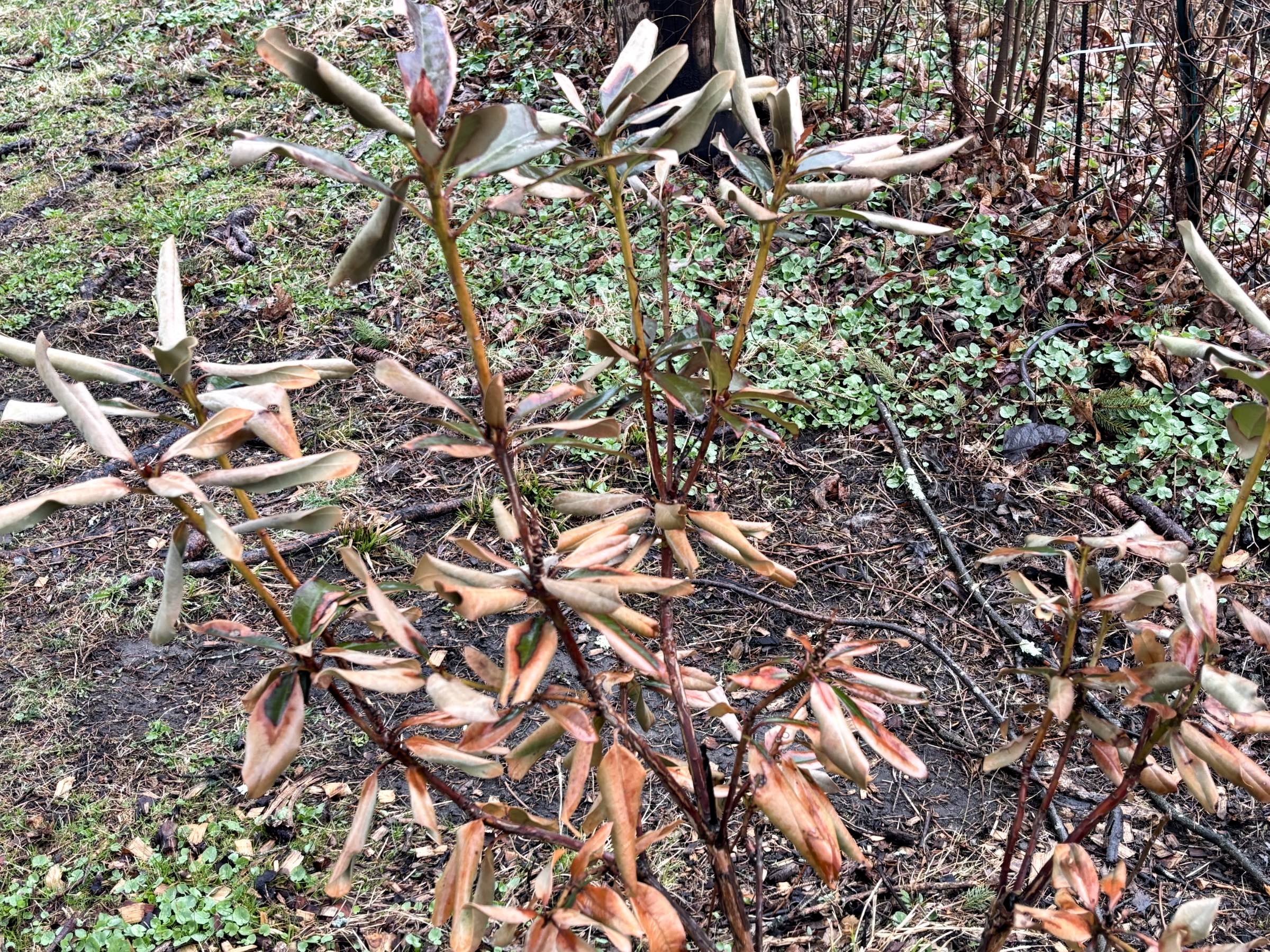
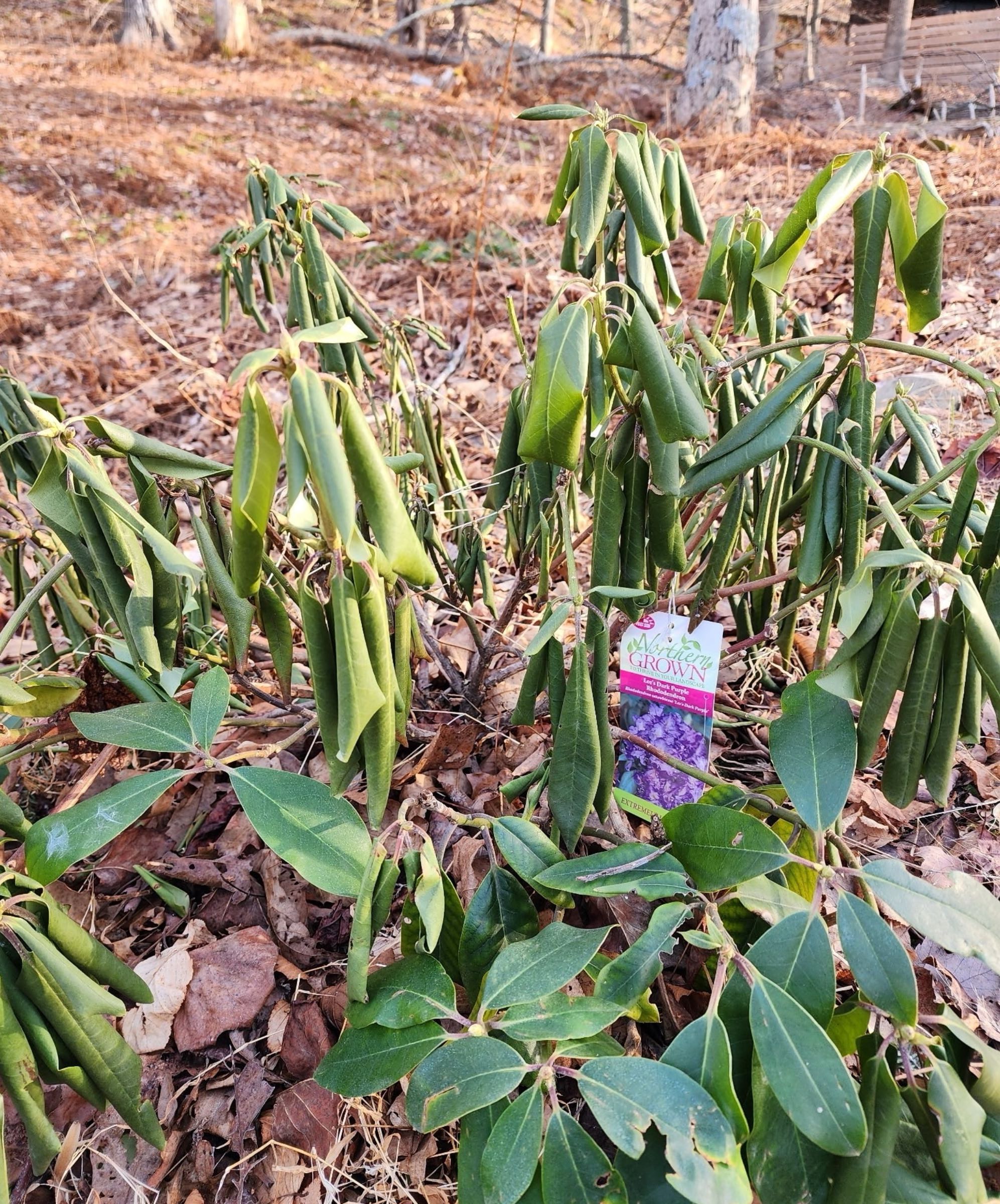 Microclimate Effects
Microclimate Effects
Differences in how a rhododendron, or any plant, fares with winter could also be due to microclimates, that is, locations where, among other things, temperature, humidity, elevation, wind, and/or insolation differ from the general area. For instance, the air generally cools by one degree Fahrenheit for every three-hundred feet of elevation. Upper reaches are also often windy, which also affects winter damage.

Near wall, mild damage
Surprisingly, you and your plants could also be chillier at the very bottom of a slope. On windless nights when a plant’s view of the sky is clear with no clouds or leafy trees to block radiation of the sun’s heat from the ground back to the heavens, an “inversion” occurs, with warmer air higher up and colder air near ground level. Being heavier than warm air, that cold air flows downhill to collect in low spots or on the upper side of a fence, dense shrub, or other barrier.
My cold-damaged rhododendron sits at the low point in my from yard. The yard is relatively flat but that spot is about seven feet lower than that of the three unscathed rhododendrons. The east and north aspects of these latter plants exposes them to less extreme temperature changes.
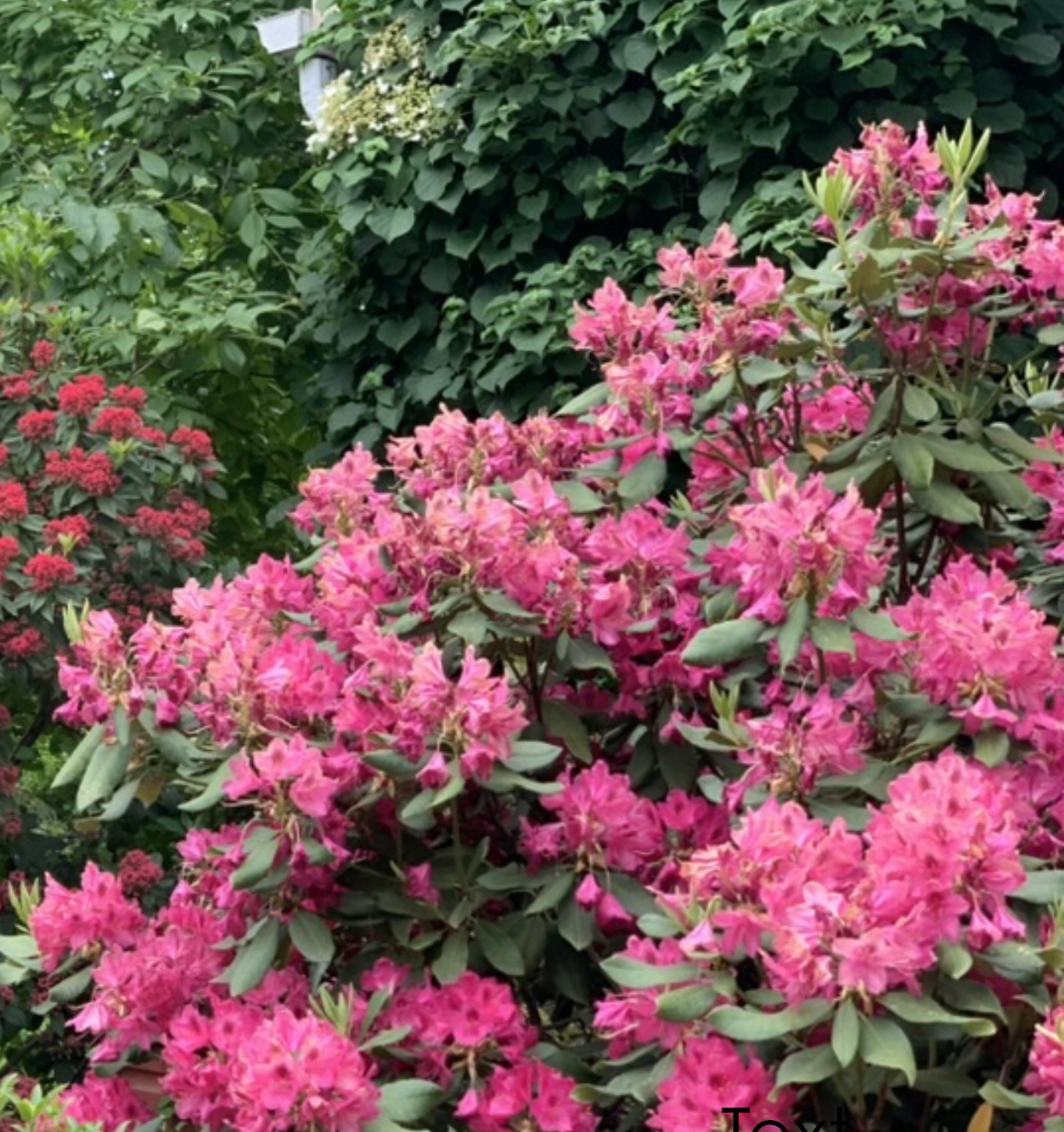
Undamaged rhododendron in bloom last summer
Walking through my breezeway to check on another evergreen, dwarf sarcococca, lots of browned leaves stare back at me. Not surprising since this plant is listed as Zone 6 cold hardiness, and here it’s Zone 5. I knew that when I planted it, so planted it in a narrow bed backed by a south facing brick wall and fronted by a brick terrace. Winter snow cover usually protects this plant’s evergreen leaves. And the bricks behind and in front of the plant absorb the sun’s heat to radiate it at night. Not enough of any of this this past winter though.
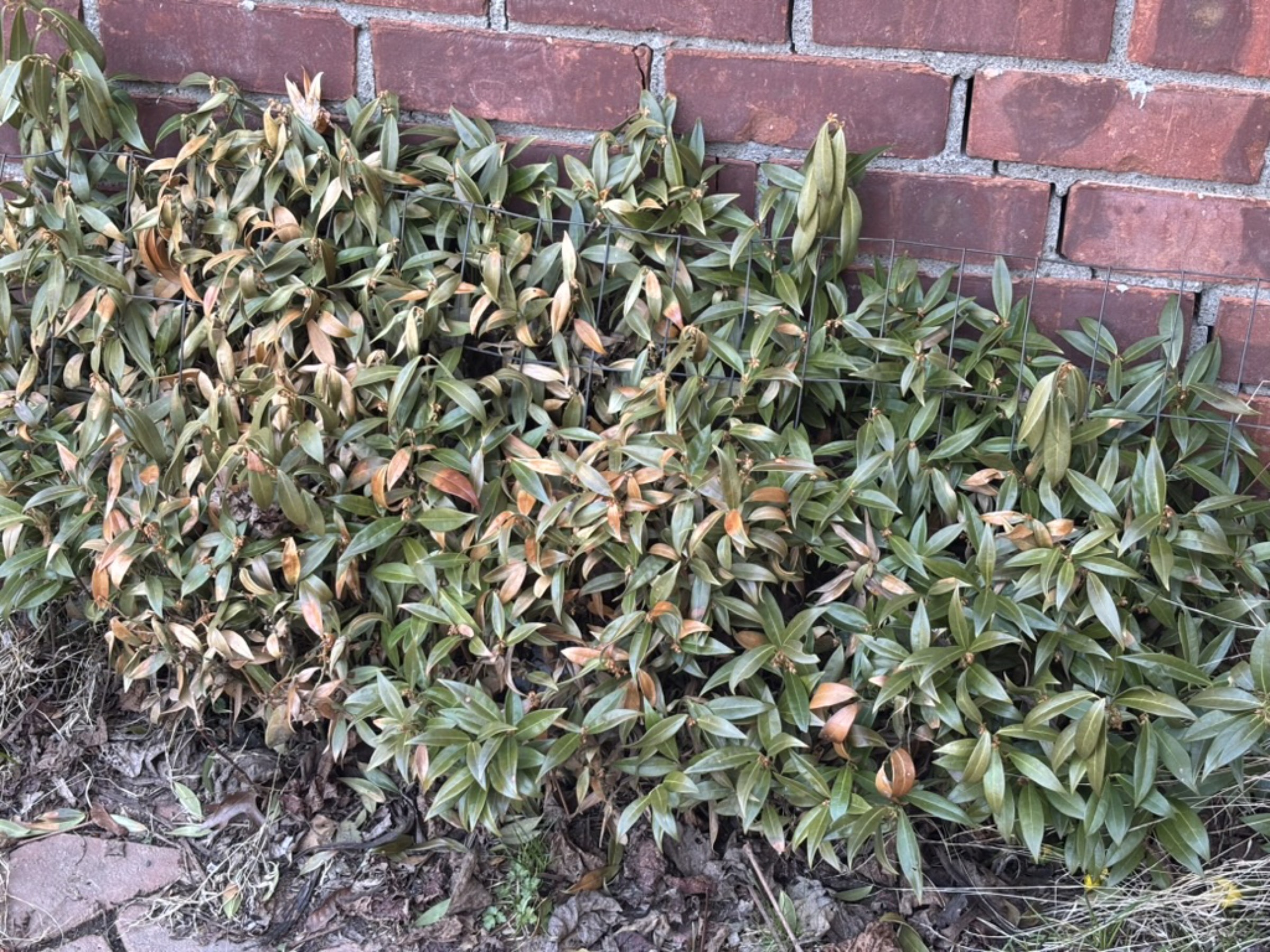
Sarcococco, cold damage
All that heat could have kept the plant on the dry side — and then more susceptible to winter desiccation. Then again, the roots could run under the brick into moist soil — and then be less susceptible to winter desiccation.
All of which is to say that biological systems are complex, and sometimes it’s hard to pin down an exact cause of, in this case, cold damaged leaves. Did I mention the effect of temperatures and humidity that precede cold damage?
What to Do?
At this point, any gardener would justifiably wonder what action to take. More than one person told me they were getting ready to cut all those dead stems to the ground and hope for the best.
Don’t! Those stems aren’t necessarily dead! My guess is that they, in fact, are not so. New branches and leaves will likely sprout from buds along those stems. If you’re impatient, you could make a small scratch in a stem. It’s alive if green beneath the scratch, dead if brown or browning.
If, say, a plant is blocking a window or crowding its neighbors, then now would be a time to prune back some stems. In this case, clip off a few stems right to their bases rather than just shortening many stems. The pruned plant, once growth fills in (if those stems are, in fact, alive, just leafless), will then look more natural rather than having received a crewcut.
You can’t go wrong if you just wait for new growth before seeing what, if anything, needs pruning. If some stems are actually dead, you could prune them off in a few weeks. No harm in waiting.
In all likelihood, roots, insulated in the ground, are fine and will send up new sprouts. If all the stems have died which, as I wrote, is unlikely, you could then prune everything to the ground. New sprouts will shoot forth from ground level. Expect vigorous growth, fueled by a well established root system.
Except for yielding fewer or no flowers, depending on the scenario, your rhododendron will probably be lush with leaves this coming season.


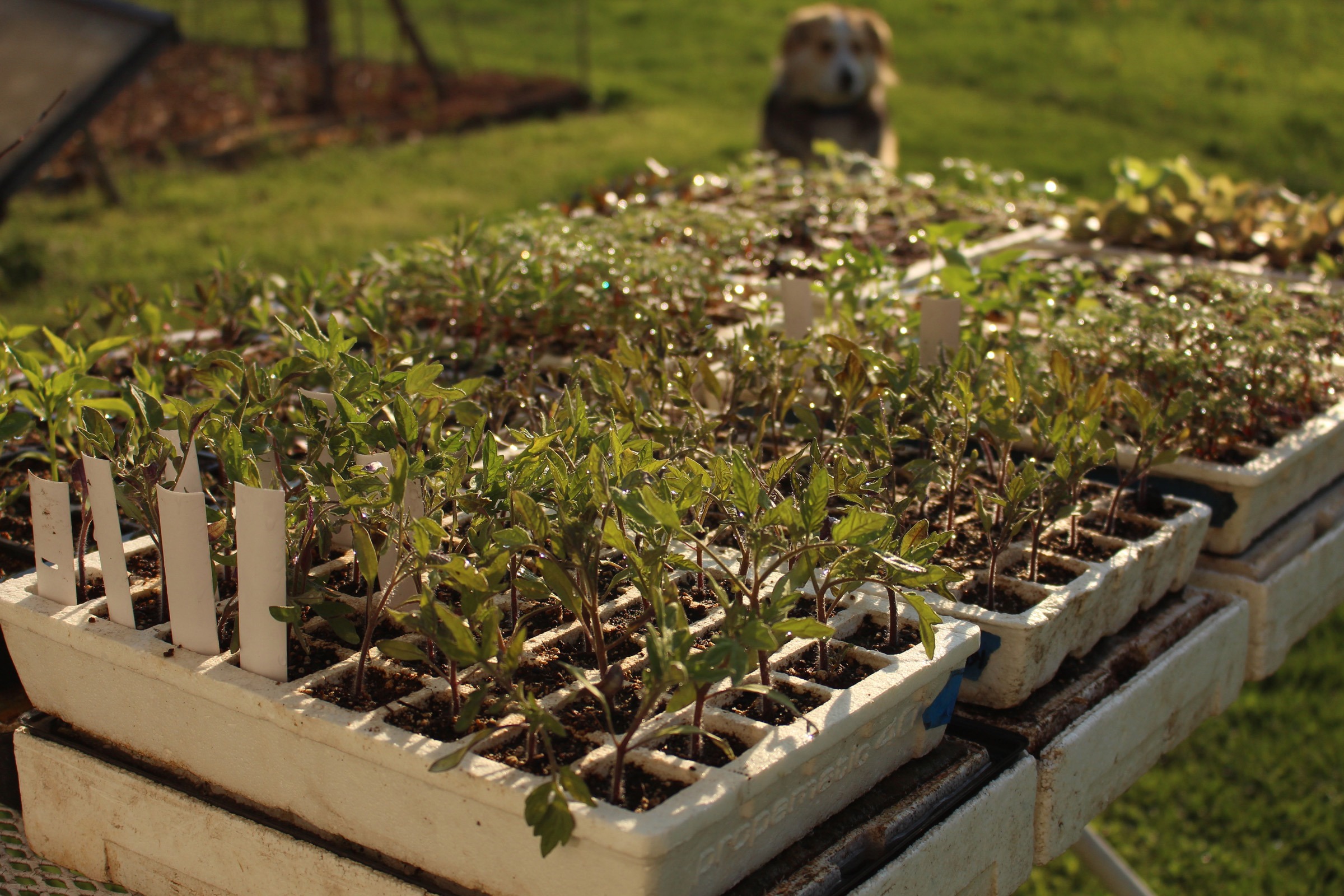
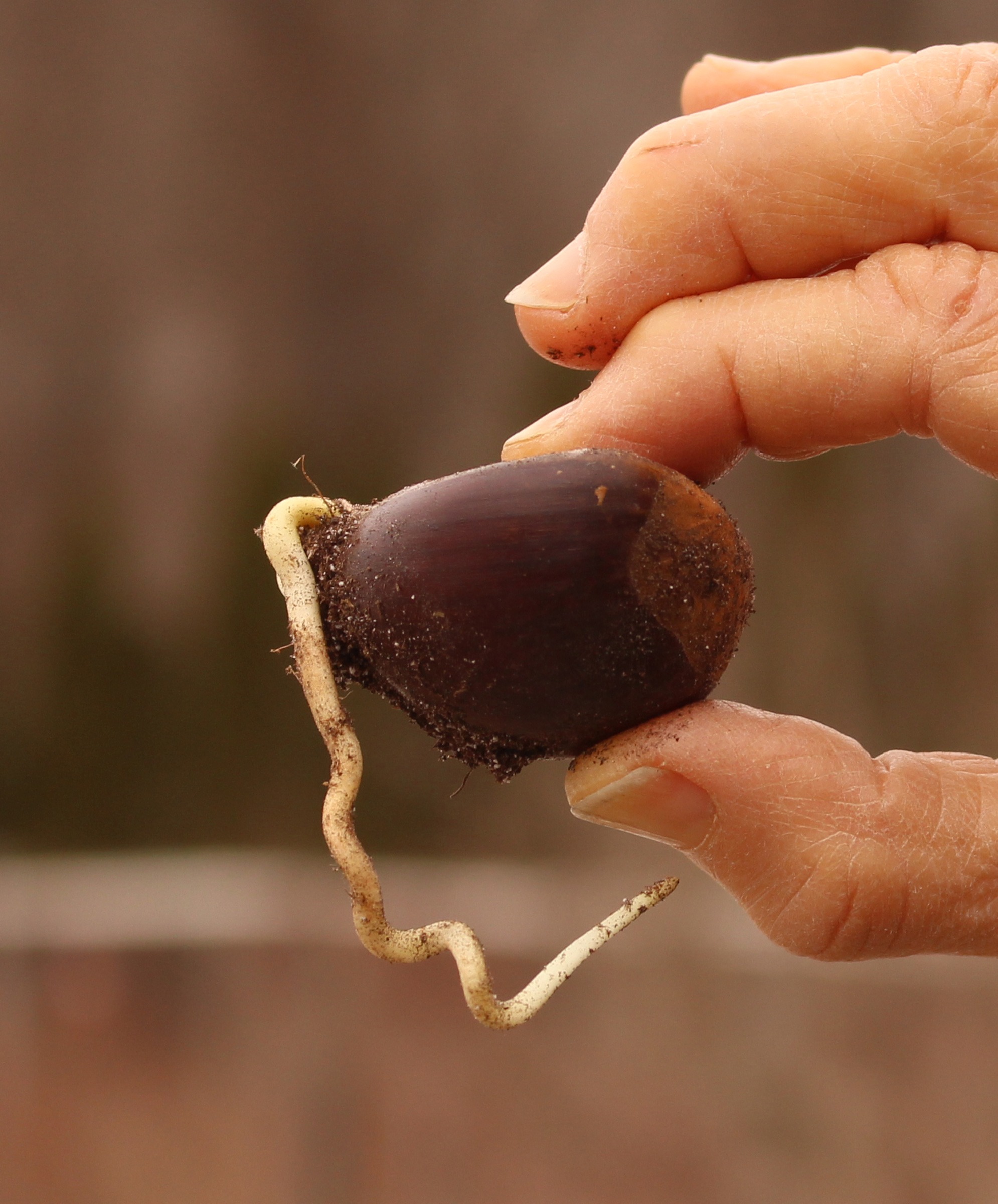
Thanks for the helpful information about Rhododendron damage. Compact rhododendron, white flowers, hoary leaves (back of leaf brown and ‘fuzzy’) Would probably be Yaku Princess. Flowers fade to white. Anyway, that would be my guess.
I misremembered the flowers; they are red.
Thanks Lee, I was just wondering about this. Do. you think removing the dead-looking leaves would help?
Any dead leaves aren’t helping or hindering the plant, so you could remove them. You decide whether they look better with or without ratty looking leaves.